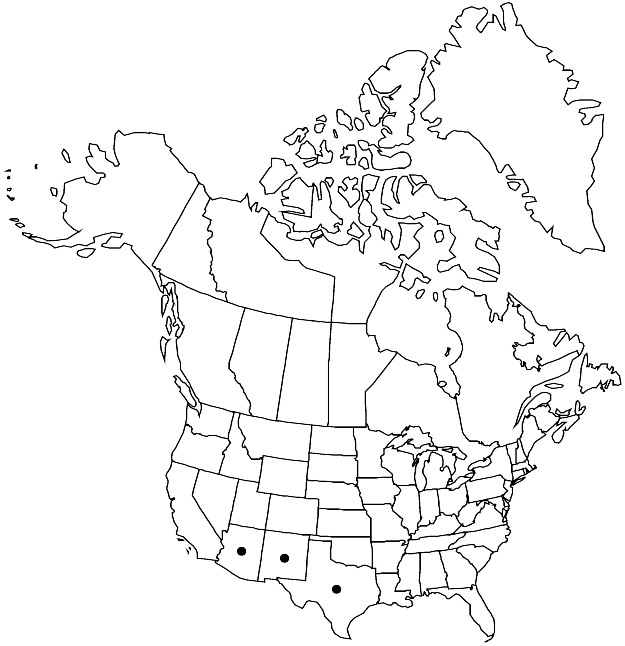Entodon beyrichii
Linnaea 18: 708. 1845.
Plants in dense mats, golden brown to reddish. Stems to 8 cm, irregularly to ± regularly pinnate, branches terete-foliate. Leaves erect, ovate-lanceolate, oblong-ovate, or broadly ovate, (0.8–)1–1.5 mm; margins plane or slightly recurved proximally, entire proximally, usually serrulate distally; apex acute or sometimes mucronate, rarely narrowly obtuse; costa double, short, often ending 1/4–1/2 leaf length; alar region ± abruptly differentiated, 1-stratose, reaching costa or not. Sexual condition autoicous. Seta reddish, 1–2 cm. Capsule long-cylindric, 2.5–4 mm; annulus 3–5-seriate, deciduous; operculum bluntly long-conic, slightly oblique; exostome teeth yellow-brown, external surface densely papillose, not perforate; endostome segments smooth to papillose. Spores 10–12 µm, smooth to finely papillose.
Habitat: Logs, rock, exposed, dry habitats
Elevation: moderate elevations
Distribution

Ariz., N.Mex., Tex., Mexico, West Indies, South America.
Discussion
Entodon beyrichii is a very common species in the drier habitats of Mexico, but barely reaches the United States. The species often grows in very dry, exposed habitats and then the seta can become bleached and appear not to be red. The papillose exostome teeth and smooth to papillose endostome segments aid in identification.
Selected References
None.